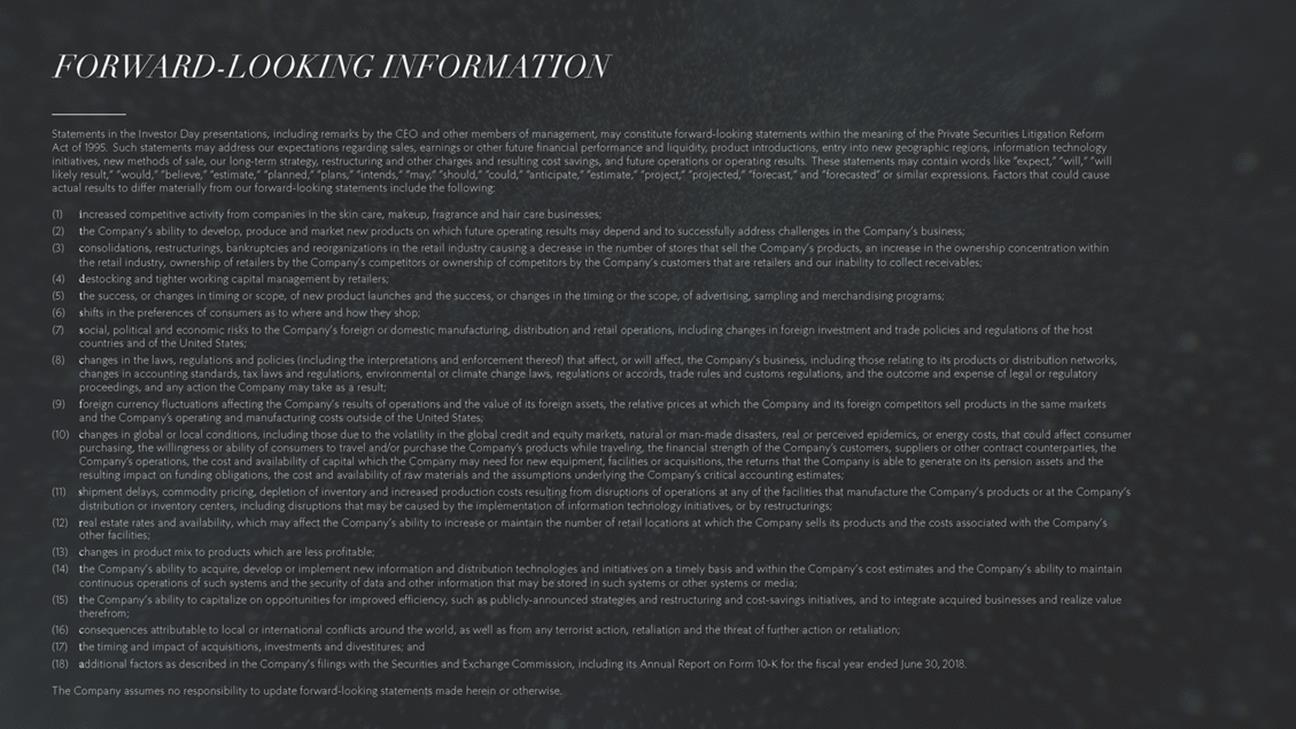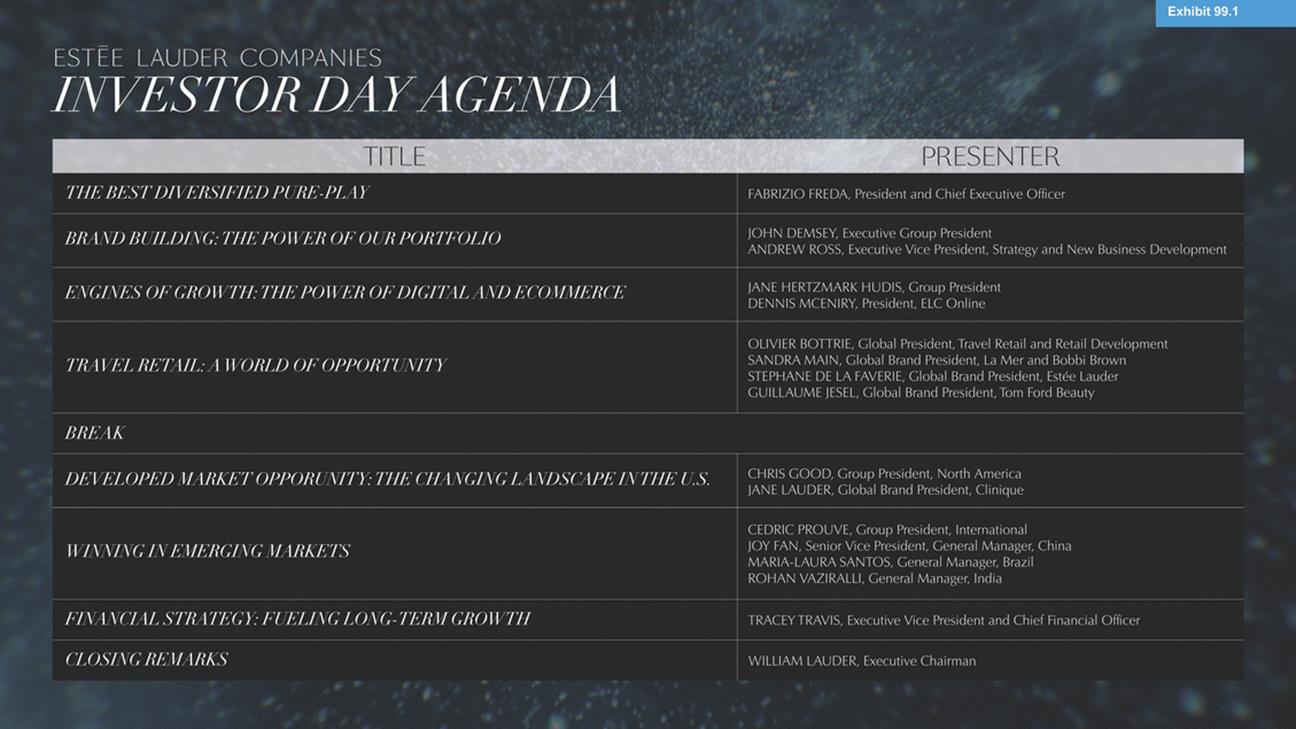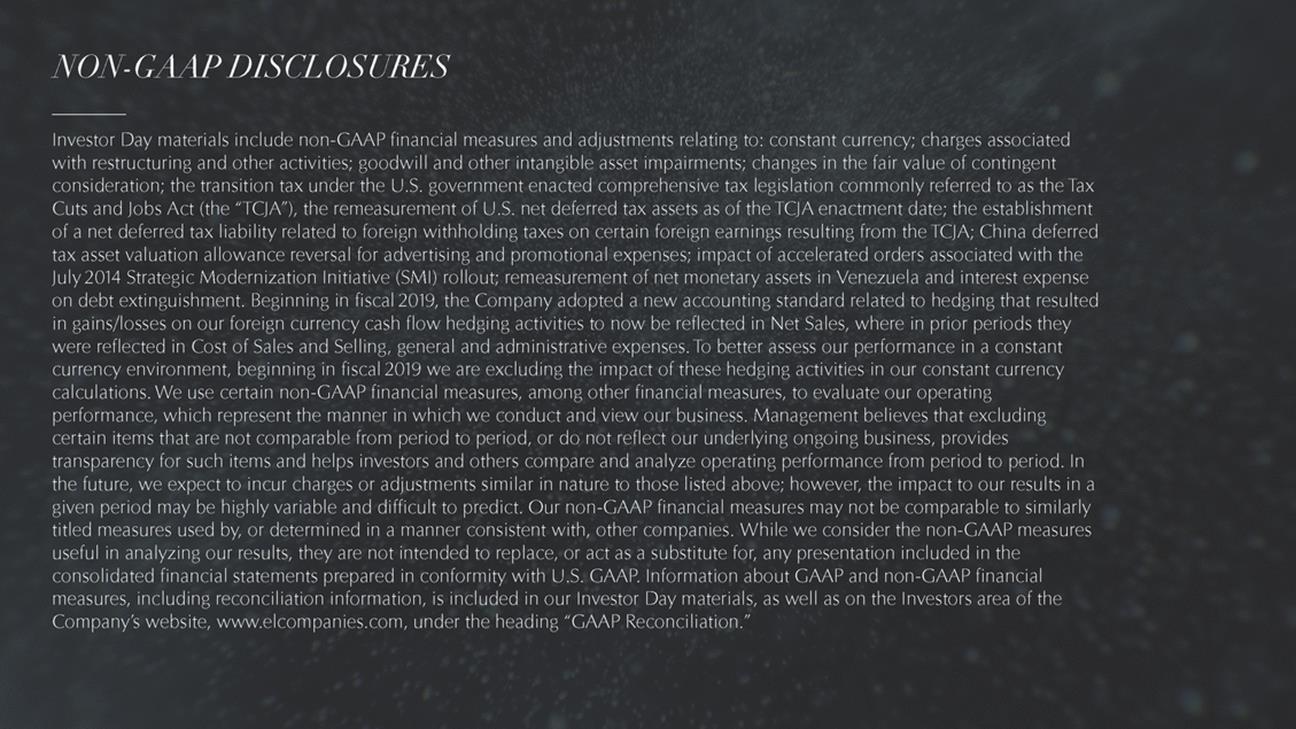FORWARD-LOOKING INFORMATION Statements in the Investor Day presentations, including remarks by the CEO and other members of management, may constitute forward-looking statements within the meaning of the Private Securities Litigation Reform Act of 1995. Such statements may address our expectations regarding sales, earnings or other future financial performance and liquidity, product introductions, entry into new geographic regions, information technology initiatives, new methods of sale, our long-term strategy, restructuring and other charges and resulting cost savings, and future operations or operating results. These statements may contain words like “expect,” “will,” “will likely result,” “would,” “believe,” “estimate,” “planned,” “plans,” “intends,” “may,” “should,” “could,” “anticipate,” “estimate,” “project,” “projected,” “forecast,” and “forecasted” or similar expressions. Factors that could cause actual results to differ materially from our forward-looking statements include the following: (1) (2) (3) increased competitive activity from companies in the skin care, makeup, fragrance and hair care businesses; the Company’s ability to develop, produce and market new products on which future operating results may depend and to successfully address challenges in the Company’s business; consolidations, restructurings, bankruptcies and reorganizations in the retail industry causing a decrease in the number of stores that sell the Company’s products, an increase in the ownership concentration within the retail industry, ownership of retailers by the Company’s competitors or ownership of competitors by the Company’s customers that are retailers and our inability to collect receivables; destocking and tighter working capital management by retailers; the success, or changes in timing or scope, of new product launches and the success, or changes in the timing or the scope, of advertising, sampling and merchandising programs; shifts in the preferences of consumers as to where and how they shop; social, political and economic risks to the Company’s foreign or domestic manufacturing, distribution and retail operations, including changes in foreign investment and trade policies and regulations of the host countries and of the United States; changes in the laws, regulations and policies (including the interpretations and enforcement thereof) that affect, or will affect, the Company’s business, including those relating to its products or distribution networks, changes in accounting standards, tax laws and regulations, environmental or climate change laws, regulations or accords, trade rules and customs regulations, and the outcome and expense of legal or regulatory proceedings, and any action the Company may take as a result; foreign currency fluctuations affecting the Company’s results of operations and the value of its foreign assets, the relative prices at which the Company and its foreign competitors sell products in the same markets and the Company’s operating and manufacturing costs outside of the United States; changes in global or local conditions, including those due to the volatility in the global credit and equity markets, natural or man-made disasters, real or perceived epidemics, or energy costs, that could affect consumer purchasing, the willingness or ability of consumers to travel and/or purchase the Company’s products while traveling, the financial strength of the Company’s customers, suppliers or other contract counterparties, the Company’s operations, the cost and availability of capital which the Company may need for new equipment, facilities or acquisitions, the returns that the Company is able to generate on its pension assets and the resulting impact on funding obligations, the cost and availability of raw materials and the assumptions underlying the Company’s critical accounting estimates; shipment delays, commodity pricing, depletion of inventory and increased production costs resulting from disruptions of operations at any of the facilities that manufacture the Company’s products or at the Company’s distribution or inventory centers, including disruptions that may be caused by the implementation of information technology initiatives, or by restructurings; real estate rates and availability, which may affect the Company’s ability to increase or maintain the number of retail locations at which the Company sells its products and the costs associated with the Company’s other facilities; changes in product mix to products which are less profitable; the Company’s ability to acquire, develop or implement new information and distribution technologies and initiatives on a timely basis and within the Company’s cost estimates and the Company’s ability to maintain continuous operations of such systems and the security of data and other information that may be stored in such systems or other systems or media; the Company’s ability to capitalize on opportunities for improved efficiency, such as publicly-announced strategies and restructuring and cost-savings initiatives, and to integrate acquired businesses and realize value therefrom; consequences attributable to local or international conflicts around the world, as well as from any terrorist action, retaliation and the threat of further action or retaliation; the timing and impact of acquisitions, investments and divestitures; and additional factors as described in the Company’s filings with the Securities and Exchange Commission, including its Annual Report on Form 10-K for the fiscal year ended June 30, 2018. (4) (5) (6) (7) (8) (9) (10) (11) (12) (13) (14) (15) (16) (17) (18) The Company assumes no responsibility to update forward-looking statements made herein or otherwise.



